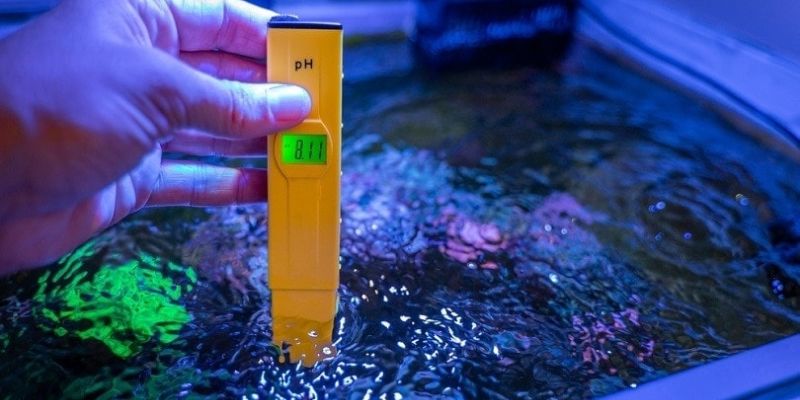In this detailed manual, we’ll discuss the appropriate pH level of the water in your fish tank. As devoted fish aquarium keepers, we know how important it is to provide a healthy habitat for our fish and other aquatic friends. Fish health and survival are both significantly affected by the pH level. If you want your fish tank to be a healthy environment for its inhabitants, you need to know “What is the Appropriate pH Level for a Fish Aquarium?”
What is the Appropriate pH Level for a Fish Aquarium?
pH Scale
A substance’s acidity or alkalinity can be determined by its pH level, which is measured on a scale from zero to fourteen. Values below 7 imply acidity, while values over 7 suggest alkalinity; pH 7 is neutral. The health and happiness of your fish depends on the aquarium’s pH level, which should be kept constant to simulate their natural environment.
pH Levels Preferred by Various Fish Species
Due to differences in their native environments and evolutionary adaptations, various fish species have specific preferences for water pH. Let’s have a look at the ideal pH levels for some widespread fish species:
Tropical Fish:
- The ideal pH range for most tropical fish is between 6.5 and 7.5, where the water is slightly acidic to neutral.
- In order to ensure the health of your tropical fish, it is essential that you learn about their individual pH preferences.
Freshwater Fish
- There is a greater pH tolerance spectrum among freshwater fish, with some species thriving in acidic water and others favoring alkaline circumstances.
- The optimal range of pH for freshwater fish is between 6.0 and 8.0.
Marine Fish
- Fish in marine environments, such as those found in saltwater and on coral reefs, need a more pH-balanced setting.
- Marine fish thrive in slightly alkaline environments with a pH between 8.1 and 8.4.
Importance of a Balanced pH for Fish Survival:
The wellbeing of your fish depends on maintaining a constant pH level. Stress brought on by changes in pH can lower resistance to disease and infection.
- The pH of water has a direct effect on the solubility and availability of minerals and nutrients. If the fish’s internal environment is out of whack, it may be unable to take in enough food or may even be poisoned.
- Live plants in an aquarium need a certain pH range for maximum development and photosynthesis, just like land plants need. The fish benefit from the plants because they provide natural cover and oxygenation, both of which are aided by a stable pH level.
- The aquarium’s biological filtration system relies on the proliferation of beneficial bacteria, which can flourish only in an environment where the pH remains constant. These microorganisms aid in decomposing waste items, keeping the tank clean and safe for your fish.
pH Testing and Observation
To maintain a balanced pH level in water, it must be measured and monitored on a consistent basis. The following procedures should be followed for accurate pH monitoring:
- A high-quality pH testing kit made for aquarium use is a wise investment. Test strips, liquid test kits, and digital meters are common components of these sets.
- To get the most out of your testing kit, make sure to read the included instructions. Guidelines for correct pH measurement may vary depending on the kit used.
- Get a sample of the water in your aquarium. Collecting water from several points in the tank will ensure that the sample is representative of the entire body of water.
- To assess the pH level of the water sample, use the testing kit in accordance with the manufacturer’s instructions. Take note of the outcome for reference later.
- Testing the pH level weekly is suggested, especially when first setting up a new tank or after making major adjustments. Consistent checks allow for the early detection of trends and problems.
Keeping the pH Constant
The following steps can be taken to keep the pH level constant:
- Partial water changes performed on a regular basis assist maintain a consistent pH level by diluting any excess acids or alkalis.
- The pH level should be checked frequently and adjusted as needed. The pH level can be adjusted gradually and carefully with the use of pH regulators, such as pH increasers or decreasers. However, abrupt or extreme shifts should be avoided because of the stress they might cause in fish.
- To maintain a consistent pH level, you can use buffering items like crushed coral, limestone, or driftwood, depending on the needs of your fish species.
- Do not overcrowd the aquarium because this might cause an imbalance in waste output and pH. Be sure your tank is properly filtered and that the number of fish is appropriate for the space available.
Conclusion
Keeping the water in your fish tank at the right pH level is essential to their well-being. In order to provide the best possible conditions for your fish, it is important to learn about the pH preferences of various fish species, keep a frequent check on the water’s pH, and make any required adjustments. Remember that keeping the pH level steady is essential to the long-term success of your fishkeeping endeavors.


можно ли купить диплом в бишкеке можно ли купить диплом в бишкеке .